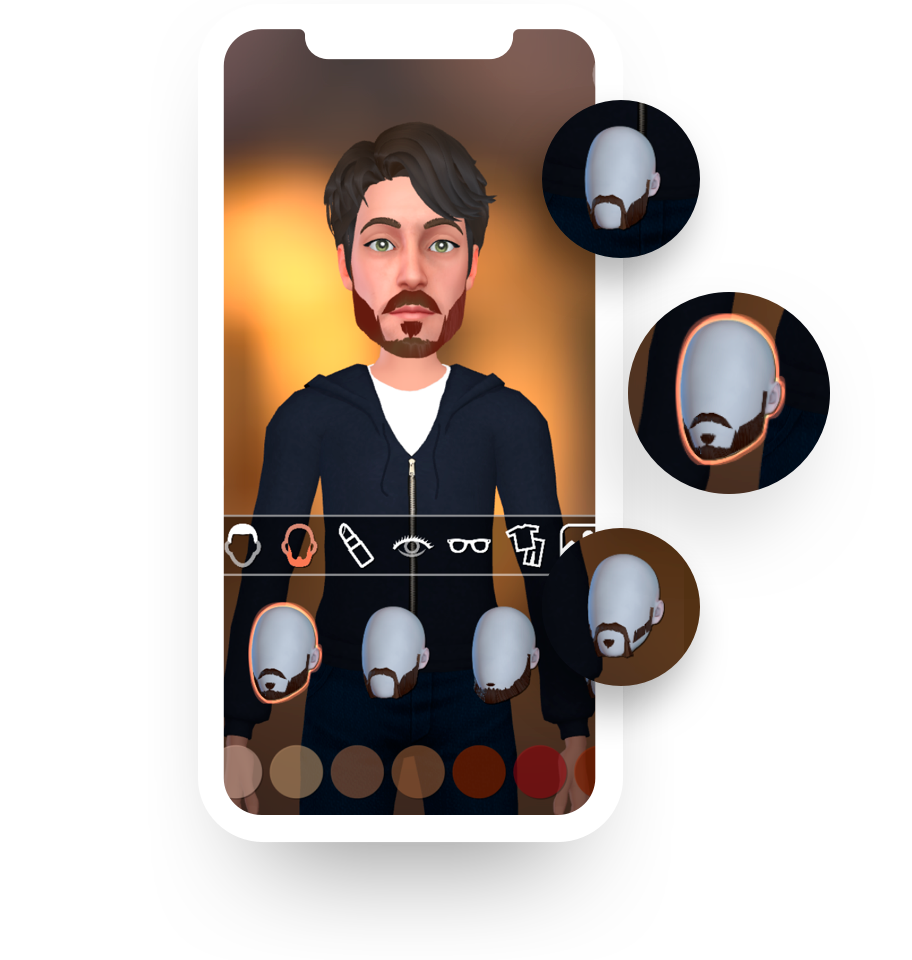Can LoomieLive cure Zoom fatigue?
We have all read about it by now: Zoom fatigue. We’re all Zoom’d out. At this point of the Coronavirus pandemic we’ve been using Zoom (or similar type apps) as the go-to tool for informal social gatherings, virtual happy hours, family events, religious services, online classes, doctors’ appointments, and of course, the original intended use: virtual work meetings.
The dramatic increase in usage of Zoom and similar apps, has resulted in many people feel even more anxious and stressed out. The reasoning behind this is multi-faceted.
- By showing us our own image as well as others’, Zoom ensures that we will critique ourselves in real time.
- We’re also often opening a chunk of our homes for others to view, and that can trigger social worries (something that is also a big issue for kids in online classes).
- On top of standard-grade performance anxiety, the “big face” image that Zoom uses by default in its “speaker view” can trigger a “fight-or-flight” surge of adrenaline, writes Jeremy Bailenson, founding director of Stanford’s Human Computer Interaction Lab.
- If you switch to the “Hollywood Squares”-style “gallery view,” you’re confronted with a sea of separated faces, which is not how evolution has adapted us to group interactions.
- As L.M. Sacasas observes, you can’t really achieve true eye contact with anyone: If you look right into someone else’s eyes, you will appear to them as if you aren’t looking right at them — to achieve that, you have to look right at the camera.
All of this has led Loom.ai co-founders, Kiran Bhat and Mahesh Ramasubramanian to speed up the release of their new app, LoomieLive. Both Bhat and Ramasubramanian hail from the Hollywood animation industry, where Mr. Bhat won an Academy Award for his facial animation of The Hulk and Mr. Ramasubramanian, an Academy member, led the special effect teams at Dreamworks on franchises including Shrek, Madagascar, and others. Now they are taking their animation skills and bringing them to the consumer.
That’s where LoomieLive comes into play. LoomieLive allows you to participate in video calls as an avatar of yourself (or even something fun, like a kitty or a monkey). It works the majority of desktop video conferencing applications, including Zoom, Skype, Webex, etc, replacing the webcam with your Loomie [avatar].
LoomieLive comes with several standard avatars, however, the real fun comes in when you create a personalized avatar of yourself. In order to create a personalized avatar, you need to download the Loomie mobile app for iOS or Android, once you launch the app, it’ll ask you to take a selfie of yourself, which will create the “base” look for the avatar and from there you can customize it further, including editing aspects like your hair, nose, lips, mouth, ears, etc.

After you’ve created your personalized avatar and want to use it in a video call, simply download the Loomie desktop app, install it, and login using the same login/password as on the mobile application, this will import your personalized Loomie avatar to the desktop app.

In the desktop app, you can choose two different modes: .5x or 1x zoom. This moves your avatar closer into the frame or farther away. The desktop app also offers a few different backgrounds you can choose from for your avatar. I love the choices they have, they’re clean and sophisticated, however, in the beta version of the app I tested you’re limited to only those backgrounds. I’d love to have the option to use my very own background in a future release.
You can also use the thumbs up or wave buttons in the app to make your avatar performs those acts. It’s a nice touch, allowing you to react without having to speak. The avatar itself is pretty neat, it will sit there in frame for you, and it even makes little hand motions and gestures (all on its own). Your Loomie avatar will even move its mouth when you’re speaking by using the company’s lip sync technology.

If you want, you can also enable your webcam with your Loomie avatar, which will track your face and head movements. You will still be your avatar in the video call but you’ll have to be a bit more “present” due to the face and head tracking. I played around with this feature quite a bit and it works well, my avatar was able to mimic many of my facial expressions, even sticking my tongue out.
This kind of technology may just what we need right now. But it also presents other possibilities, including changing the social norms for video calls. Plus, because of the fact that the avatar is running locally without any video being fed to the video call, it can potentially be beneficial to companies like Zoom by helping lower bandwidth usage and thereby reducing costs.
I’m really enjoying LoomieLive and I do plan to use it in my video calls going forward. What are your thoughts? Let me know!
